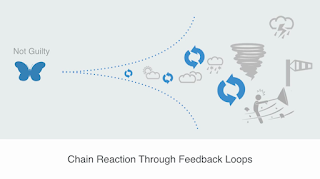Did you read ISGOTT or SIGTTO? A risk analysis for Storage Terminals by VanCampen's Law
Using *VanCampen’s general law of functionality, we can analyze whether marine oil, gas, and chemical storage terminals can operate optimally if critical guidelines like **ISGOTT 6* (International Safety Guide for Oil Tankers and Terminals) or *SIGTTO* (Society of International Gas Tanker and Terminal Operators) are not followed. Here’s the breakdown:
### *Variable Definitions in Context*
- *Mass (m):* The physical infrastructure (storage tanks, pipelines, valves) and volume of hazardous materials (oil, gas, chemicals).
- *Information (i):* The knowledge and application of safety protocols, operational guidelines (ISGOTT/SIGTTO), maintenance procedures, and risk assessments.
- *Reality (r):* The actual operational environment, including risks (leaks, explosions, corrosion), regulatory requirements, and environmental/economic consequences of failure.
### *Analysis Using the Law*
#### *1. Probability Dysfunctional (ΔS > 0):*
*Condition:* \((m - i) > r\)
*Scenario:*
- If *guidelines are ignored* (↓\(i\)), terminals rely on physical infrastructure (\(m\)) alone, without proper safety practices or procedural knowledge.
- The *gap* between the volume of hazardous materials (\(m\)) and lack of safety information (\(i\)) exceeds the system’s ability to manage reality (\(r\)), leading to *entropy* (disorder).
*Consequences:*
- *Operational failures:* Leaks, explosions, or corrosion due to improper handling (e.g., incompatible chemical storage, poor maintenance).
- *Collateral damage:* Energy (resources, safety margins) is dissipated into chaos (environmental disasters, financial losses, human casualties).
- *Regulatory breaches:* Non-compliance with safety standards exposes terminals to legal penalties and reputational harm.
*Example:*
A terminal ignores ISGOTT guidelines for inert gas systems (\(i\)), leading to a buildup of flammable vapors (\(m\)) that exceeds safe thresholds (\(r\)). This imbalance \((m - i) > r\) results in an explosion (ΔS > 0).
#### *2. Probability Functional (J > 0):*
*Condition:* \((m + i) \leq r\)
*Scenario:*
- When *guidelines are followed* (↑\(i\)), terminals combine robust infrastructure (\(m\)) with procedural knowledge (\(i\)) to align with operational reality (\(r\)).
- *Negentropy* (order) emerges as risks are minimized through systematic compliance.
*Consequences:*
- *Optimal performance:* Safe storage, efficient maintenance, and compliance with regulations.
- *Energy conservation:* Resources (time, money, safety) are preserved through preventive measures.
- *Resilience:* Systems adapt to stressors (e.g., temperature fluctuations, pressure changes) using guideline-based protocols.
*Example:*
A terminal adheres to SIGTTO’s recommendations for LNG storage (\(i\)), ensuring pressure relief systems (\(m\)) are calibrated to handle real-world operational limits (\(r\)). This equilibrium \((m + i) \leq r\) prevents accidents and maintains efficiency (J > 0).
### *Key Implications for Terminal Operations*
1. *Ignoring Guidelines = Reduced \(i\):*
- Without ISGOTT/SIGTTO, terminals lack critical \(i\) (e.g., gas detection protocols, emergency shutdown procedures). This forces reliance on \(m\) (physical systems) alone, which cannot dynamically respond to risks (\(r\)), accelerating entropy (ΔS > 0).
2. *Reality (\(r\)) as a Hard Constraint:*
- Operational reality (\(r\)) includes physical laws (e.g., flammability limits) and regulatory demands. If \(m + i\) exceeds \(r\) (e.g., overfilling tanks without safety checks), failures are inevitable.
3. *Collateral Damage from Entropy:*
- Energy dissipation (ΔS > 0) manifests as cleanup costs, litigation, or environmental harm (e.g., oil spills damaging ecosystems).
### *Conclusion*
Under *VanCampen’s law, marine storage terminals **cannot perform optimally* if ISGOTT/SIGTTO guidelines are disregarded. Ignoring \(i\) (safety knowledge) creates a dysfunctional system where mass (\(m\)) dominates reality (\(r\)), leading to disorder (ΔS > 0). Conversely, integrating guidelines (\(i\)) with infrastructure (\(m\)) ensures alignment with operational reality (\(r\)), fostering negentropy (J > 0) and minimizing risks.
*Policy Takeaway:*
- *Mandate adherence to ISGOTT/SIGTTO* (↑\(i\)) through training and audits.
- *Regularly update infrastructure* (\(m\)) to reflect evolving guidelines and risks (\(r\)).
- *Simulate reality* (e.g., drills, risk assessments) to test the equilibrium \((m + i) \leq r\).
Failure to read and apply these guidelines is equivalent to removing the "brain" (\(i\)) from the system, leaving only its "body" (\(m\)) to collide catastrophically with reality (\(r\)).




Reacties
Een reactie posten